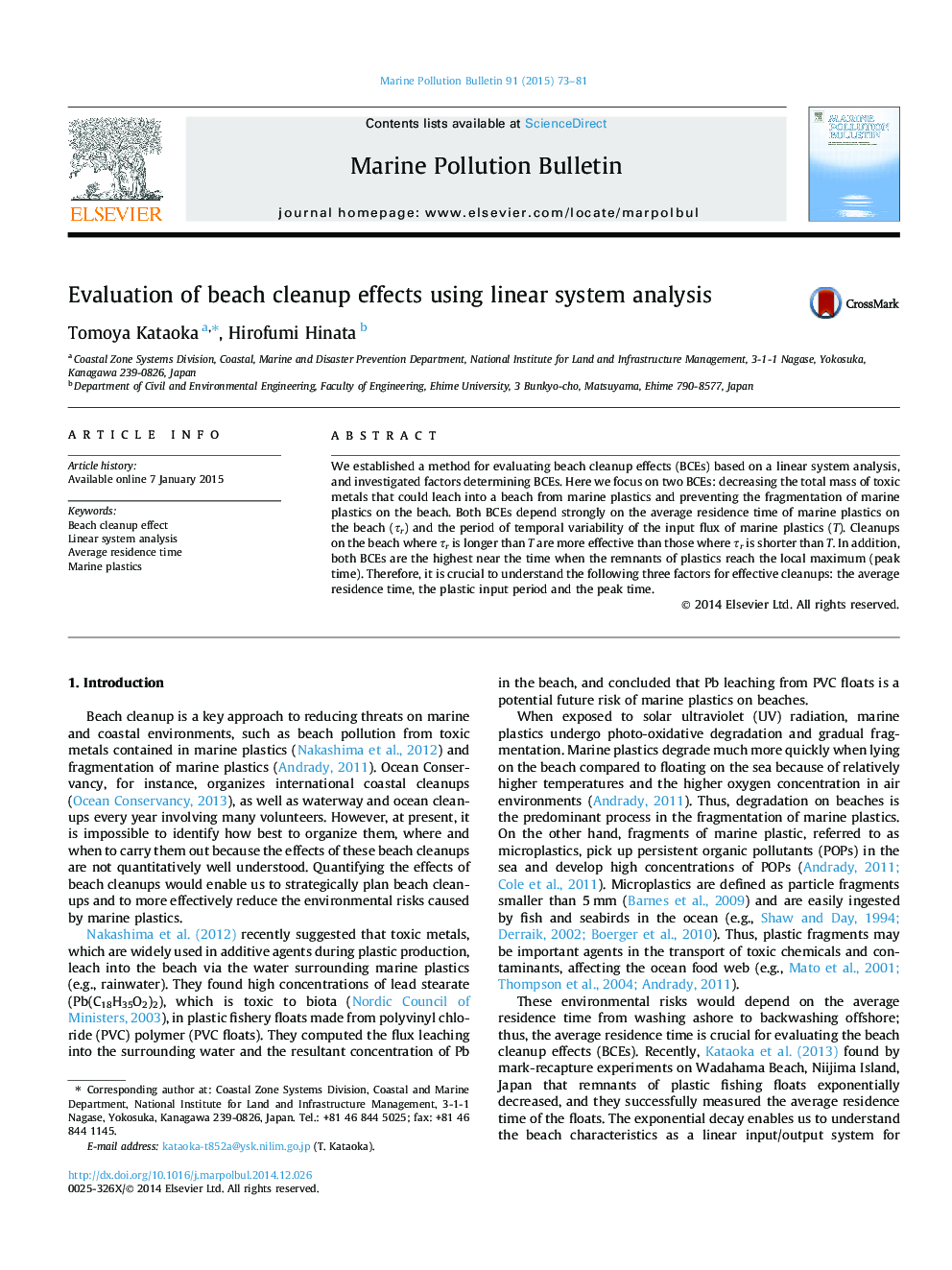| Article ID | Journal | Published Year | Pages | File Type |
|---|---|---|---|---|
| 6357510 | Marine Pollution Bulletin | 2015 | 9 Pages |
â¢We established a method for evaluating beach cleanup effects (BCEs).â¢We investigated factors determining BCEs.â¢We consider beaches as the time-invariant linear input/output system.â¢BCEs depend on the ratio of the residence time to the plastic input period.â¢BCEs are the highest when the amount of plastics reach the local maximum.
We established a method for evaluating beach cleanup effects (BCEs) based on a linear system analysis, and investigated factors determining BCEs. Here we focus on two BCEs: decreasing the total mass of toxic metals that could leach into a beach from marine plastics and preventing the fragmentation of marine plastics on the beach. Both BCEs depend strongly on the average residence time of marine plastics on the beach (Ïr) and the period of temporal variability of the input flux of marine plastics (T). Cleanups on the beach where Ïr is longer than T are more effective than those where Ïr is shorter than T. In addition, both BCEs are the highest near the time when the remnants of plastics reach the local maximum (peak time). Therefore, it is crucial to understand the following three factors for effective cleanups: the average residence time, the plastic input period and the peak time.
